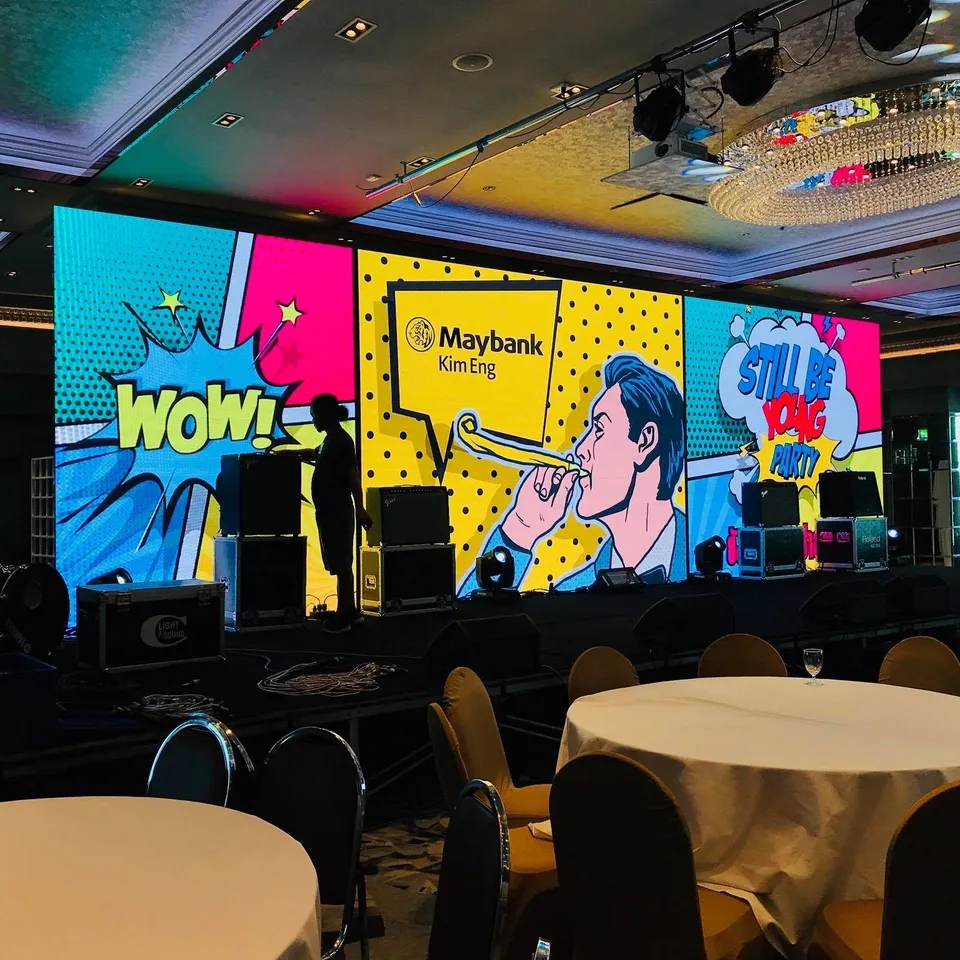The grayscale and brightness of LED screens are interrelated and have their own differences, and the grayscale and brightness are not the same. The higher the numerical value, the better.
Generally speaking, the higher the grayscale, the richer the displayed colors, and the more delicate the image, making it easier to express rich details.
At present, LED screens in China mainly use an 8-bit processing system, which means 256 (28) grayscale.

Using RGB three primary colors to create 256 × two hundred and fifty-six × 256=16777216 colors. It is commonly referred to as 16 megacolors. International brand displays mainly use a 10 bit processing system, which is 1024 grayscale, and RGB three primary colors can form 1.07 billion colors.
The following are four processing systems, divided into four different grayscale levels:
1、 An 8-bit processing system, which means 256 (2 to the 8th power) grayscale. Simply understood, there are 256 brightness changes from black to white.
2、 A 10 bit processing system, which means 1024 (2 to the 10th power) grayscale. Simply understood, there are 1024 brightness changes from black to white.
3、 A 12 bit processing system, also known as 4096 (2 to the 12th power) grayscale. Simply understood, there are 4096 brightness changes from black to white.
4、 A 14 bit processing system, also known as 16384 (2 to the 14th power) grayscale. Simply understood, there are 16384 brightness changes from black to white.
Gray scale is the determining factor of left and right colors, and an increase in the number of processing bits in the system will involve changes in various aspects such as video processing, storage, transmission, and scanning.
The larger the grayscale, the better. Due to the limited human eye resolution, and the increase in system processing bits, it will involve changes in various aspects such as video processing, storage, transmission, and scanning, resulting in a sharp increase in costs and a decrease in cost-effectiveness. Generally speaking, civil or commercial grade products can use an 8-bit system, while broadcast grade products can use a 10 bit system.
Gray level nonlinear transformation refers to the transformation of gray level data according to empirical data or some arithmetic nonlinear relationship before providing it to the display screen for display.
Due to the fact that LEDs are linear devices, their nonlinear display characteristics differ from traditional displays. In order to ensure that the LED display effect can comply with traditional data sources without losing the grayscale level, nonlinear transformation of grayscale data is generally performed in the rear stage of the LED display system, and the number of data bits after transformation will increase (ensuring that grayscale data is not lost).
Luminance discrimination level refers to the brightness level of an image that the human eye can distinguish from the darkest to the whitest.
As mentioned earlier, the grayscale level of the display screen can be as high as 256 or even 1024 levels. However, due to the limited sensitivity of the human eye to brightness, these grayscale levels cannot be fully recognized.
That is to say, many neighboring grayscale people may look the same to the eye. And the ability to distinguish between eyes varies from person to person. For display screens, the higher the level of human eye recognition, the better, because the displayed images are for people to see.
The more brightness levels that the human eye can distinguish, the larger the color space of the display screen, and the greater the potential for displaying rich colors. The brightness discrimination level can be tested using specialized software, and generally, a display screen with a level of 20 or above is considered a good level.
